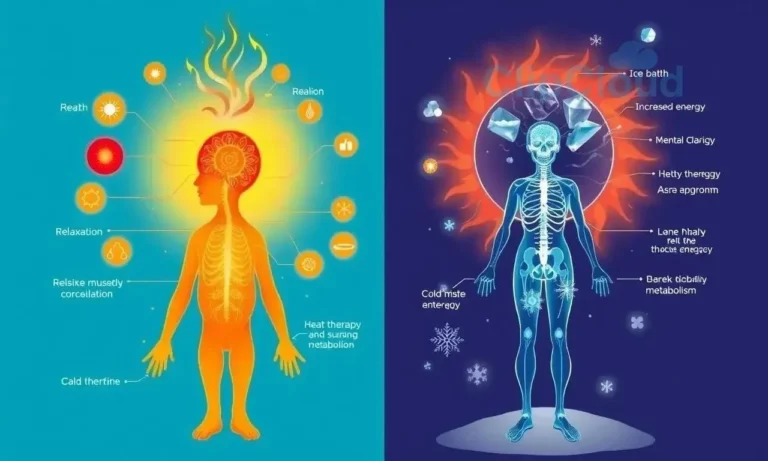Active Recovery: Boosting Fitness Regeneration
Active recovery emphasizes low-intensity movement post-workout to enhance the body’s natural healing process. It gently flushes out metabolic waste‚ reduces muscle soreness‚ and preps you for your next intense session. Unlike complete rest‚ active recovery promotes blood flow‚ nutrient delivery‚ and flexibility‚ accelerating fitness gains and minimizing downtime.
The Benefits of Active Recovery for Post-Workout Healing
Active recovery plays a crucial role in optimizing post-workout healing and minimizing the negative impacts of intense training. By incorporating low-intensity movement into your recovery routine‚ you can significantly enhance your body’s natural repair processes and return to peak performance faster. Here’s a closer look at the key benefits:
- Reduced Muscle Soreness: Intense exercise often leads to delayed-onset muscle soreness (DOMS). Active recovery helps flush out metabolic waste products‚ such as lactic acid‚ which contribute to that soreness. Gentle movement promotes blood flow‚ delivering fresh oxygen and nutrients to the muscles‚ aiding in their repair and reducing discomfort.
- Improved Circulation: Enhanced blood circulation is essential for post-workout healing. Active recovery activities‚ such as light jogging‚ swimming‚ or cycling‚ increase blood flow throughout the body. This improved circulation delivers vital nutrients and oxygen to damaged muscle tissues‚ accelerating the repair process and reducing inflammation.
- Faster Recovery Time: By actively promoting blood circulation and waste removal‚ active recovery can significantly shorten your overall recovery time. This means you can get back to your regular training schedule sooner and maintain consistent progress towards your fitness goals. Instead of feeling sluggish and stiff‚ you’ll be ready to tackle your next workout with renewed energy.
- Injury Prevention: Active recovery can also help prevent injuries by promoting flexibility and maintaining joint mobility; Gentle movements and stretching can reduce muscle stiffness and improve range of motion‚ making you less susceptible to strains and tears during subsequent workouts. This is especially important for athletes and individuals engaged in high-impact activities.
- Enhanced Performance: By optimizing recovery‚ active rest days contribute to enhanced overall performance. Consistent active recovery allows your body to adapt to training loads more effectively‚ leading to greater strength gains‚ improved endurance‚ and increased athletic capacity. It’s a proactive approach to maximizing your training outcomes.
- Stress Reduction: While intense workouts can be beneficial‚ they can also place stress on the body. Active recovery offers a gentler approach to fitness‚ allowing for both physical and mental restoration. Light exercise can reduce stress hormones and promote relaxation‚ contributing to a more balanced and sustainable fitness regimen.
Incorporating active recovery into your fitness routine isn’t just about mitigating soreness; it’s about fostering a holistic approach to training that prioritizes long-term health‚ sustainable progress‚ and overall well-being.
Improving Circulation and Myofascial Release Through Active Rest
Active rest plays a vital role in promoting circulation and facilitating myofascial release‚ both crucial components of effective post-workout recovery. Unlike complete rest‚ which can lead to stiffness and stagnation‚ active rest encourages blood flow and addresses muscle tension‚ contributing to faster healing and improved performance.
Enhanced Circulation:
- Active rest exercises‚ such as light cardio and gentle movement‚ increase blood flow throughout the body. This enhanced circulation delivers oxygen and nutrients to muscles‚ aiding in the removal of metabolic waste products that accumulate during intense workouts. Improved blood flow also reduces inflammation and promotes tissue repair.
- By keeping the circulatory system active‚ active rest prevents blood pooling and stiffness‚ common after strenuous exercise. This helps maintain flexibility and range of motion‚ preparing your body for future workouts and reducing the risk of injury.
- The increased blood flow facilitated by active rest also benefits the lymphatic system‚ which plays a critical role in removing toxins and waste from the body. This further supports the healing process and contributes to overall well-being.
Myofascial Release:
- Myofascia is the connective tissue that surrounds and supports muscles. Intense exercise can cause this tissue to become tight and restricted‚ leading to pain and reduced mobility. Active rest‚ particularly activities that involve gentle stretching and movement‚ can help release this tension and improve myofascial health.
- Activities like foam rolling‚ self-massage‚ and dynamic stretching can be incorporated into active rest to target specific areas of tightness and restriction. These techniques help break down adhesions within the myofascia‚ restoring proper muscle function and improving overall flexibility.
- By addressing myofascial restrictions through active rest‚ you can improve joint mobility‚ reduce pain‚ and enhance athletic performance. This is particularly important for athletes and individuals engaged in repetitive movements‚ as it helps maintain a healthy balance within the musculoskeletal system.
By prioritizing active rest and incorporating techniques that promote circulation and myofascial release‚ you can optimize your recovery process‚ prevent injuries‚ and maintain peak performance. This proactive approach to recovery ensures that your body is well-prepared for the demands of your fitness routine.
Dynamic Stretching and Active Recovery Techniques
Dynamic stretching and other active recovery techniques are essential for promoting circulation‚ improving flexibility‚ and accelerating post-workout recovery. Unlike static stretching‚ which involves holding a stretch for an extended period‚ dynamic stretching utilizes controlled movements to take your joints and muscles through a full range of motion. This approach enhances blood flow‚ reduces stiffness‚ and prepares your body for subsequent activity.
Dynamic Stretching Examples:
- Arm Circles: Gently rotate your arms forward and backward to loosen up the shoulder joints and improve circulation in the upper body.
- Leg Swings: Swing your legs forward and backward‚ and side to side‚ to increase hip mobility and flexibility in the hamstrings and quadriceps.
- Torso Twists: Gently twist your torso from side to side to improve spinal mobility and core engagement.
- Walking Lunges: Perform walking lunges with a focus on controlled movement and a full range of motion to engage the leg muscles and improve hip flexibility.
- High Knees and Butt Kicks: These exercises elevate your heart rate slightly while improving flexibility in the hip flexors and hamstrings.
Other Active Recovery Techniques:
- Light Cardiovascular Activity: Engaging in low-intensity cardio‚ such as walking‚ swimming‚ or cycling‚ promotes blood flow‚ aids in waste removal‚ and enhances overall recovery. Keep the intensity moderate‚ aiming for a conversational pace.
- Yoga and Pilates: These practices combine gentle movement‚ stretching‚ and breathwork to improve flexibility‚ core strength‚ and overall body awareness. They are excellent options for active recovery‚ promoting both physical and mental restoration.
- Foam Rolling: Foam rolling targets specific muscle groups and helps release tension in the myofascia‚ improving flexibility and reducing muscle soreness.
- Self-Massage: Using massage tools or your hands‚ you can apply pressure to tight muscles‚ promoting relaxation and improving blood flow.
- Active Rest Days: Dedicate specific days for active recovery‚ replacing high-intensity workouts with gentler activities to allow your body to recover and rebuild.
By incorporating dynamic stretching and other active recovery techniques into your fitness routine‚ you can optimize your recovery process‚ enhance performance‚ and minimize the risk of injury. These practices contribute to a more holistic and sustainable approach to fitness‚ promoting long-term health and well-being.
Incorporating Active Recovery into Your Fitness Routine
Integrating active recovery into your fitness routine doesn’t require a complete overhaul. It’s about making smart choices and incorporating low-intensity movement strategically to optimize your recovery and enhance your overall training program. Here’s a practical guide to help you get started:
Schedule Active Recovery Days:
- Plan for at least one or two active recovery days per week‚ especially after intense workouts. These days should focus on low-impact activities rather than strenuous exercise.
- Listen to your body and adjust your active recovery schedule based on your individual needs and training intensity. If you’re feeling particularly sore or fatigued‚ consider adding an extra active recovery day.
Choose Appropriate Activities:
- Select activities you enjoy and that promote gentle movement without placing excessive stress on your body. Walking‚ swimming‚ cycling‚ yoga‚ and Pilates are excellent options.
- Vary your active recovery activities to prevent boredom and work different muscle groups. This also helps prevent overuse injuries and promotes overall fitness.
Monitor Intensity:
- Keep the intensity of your active recovery sessions low to moderate. Aim for a conversational pace during cardio activities‚ and focus on controlled movements during stretching and other exercises.
- Avoid pushing yourself too hard during active recovery. The goal is to promote blood flow and recovery‚ not to further fatigue your muscles.
Incorporate Dynamic Stretching:
- Begin your workouts with dynamic stretching to prepare your muscles for activity and improve range of motion.
- Include dynamic stretching as part of your active recovery routine to enhance flexibility and reduce muscle stiffness.
Listen to Your Body:
- Pay attention to how your body feels and adjust your active recovery accordingly. If you’re experiencing pain‚ stop the activity and consult with a healthcare professional.
- Prioritize sleep‚ nutrition‚ and hydration‚ as these factors play a crucial role in overall recovery and well-being.
By consistently incorporating active recovery into your fitness routine‚ you can maximize your training benefits‚ minimize downtime‚ and achieve your fitness goals while prioritizing your long-term health and well-being.





